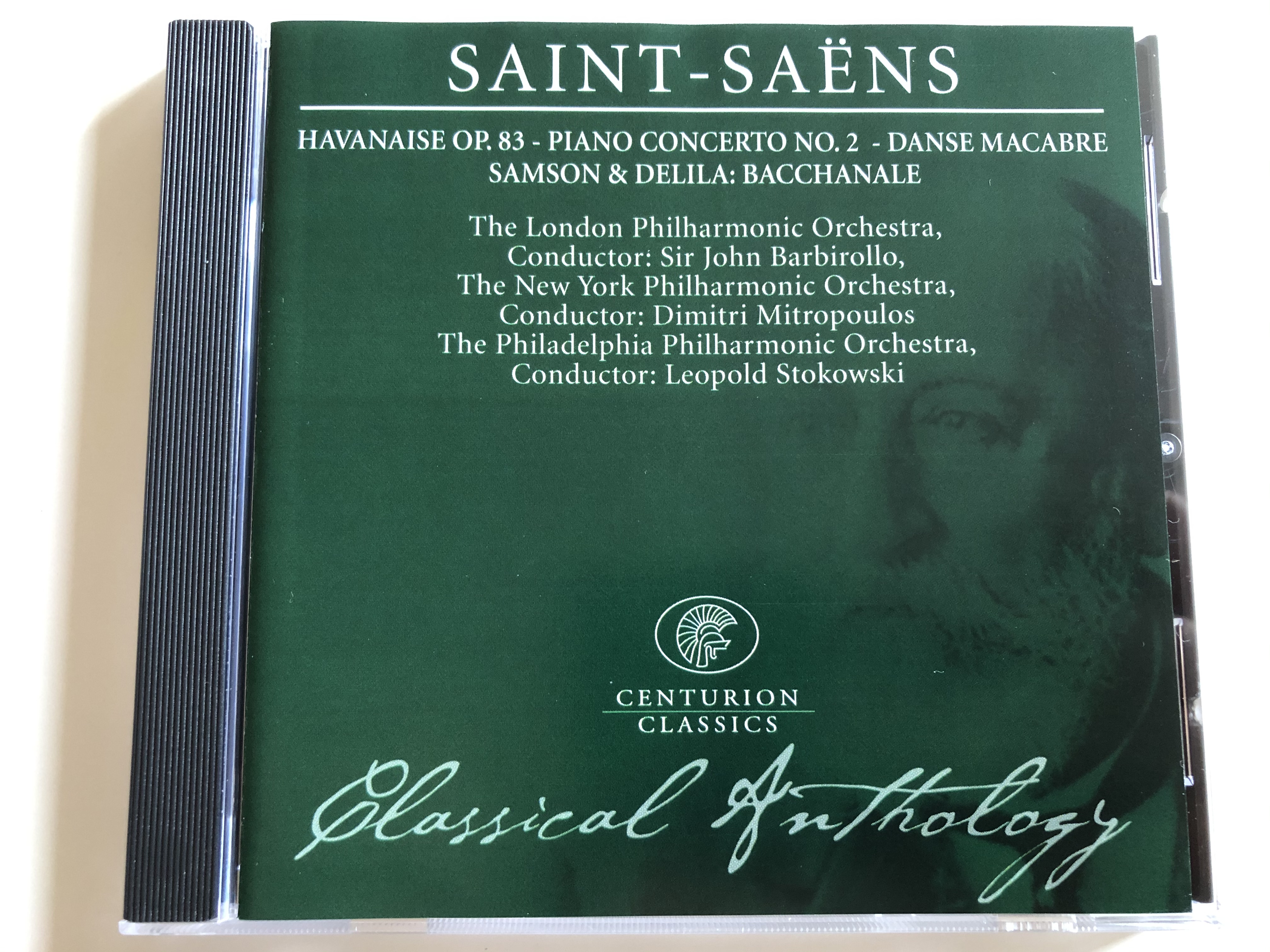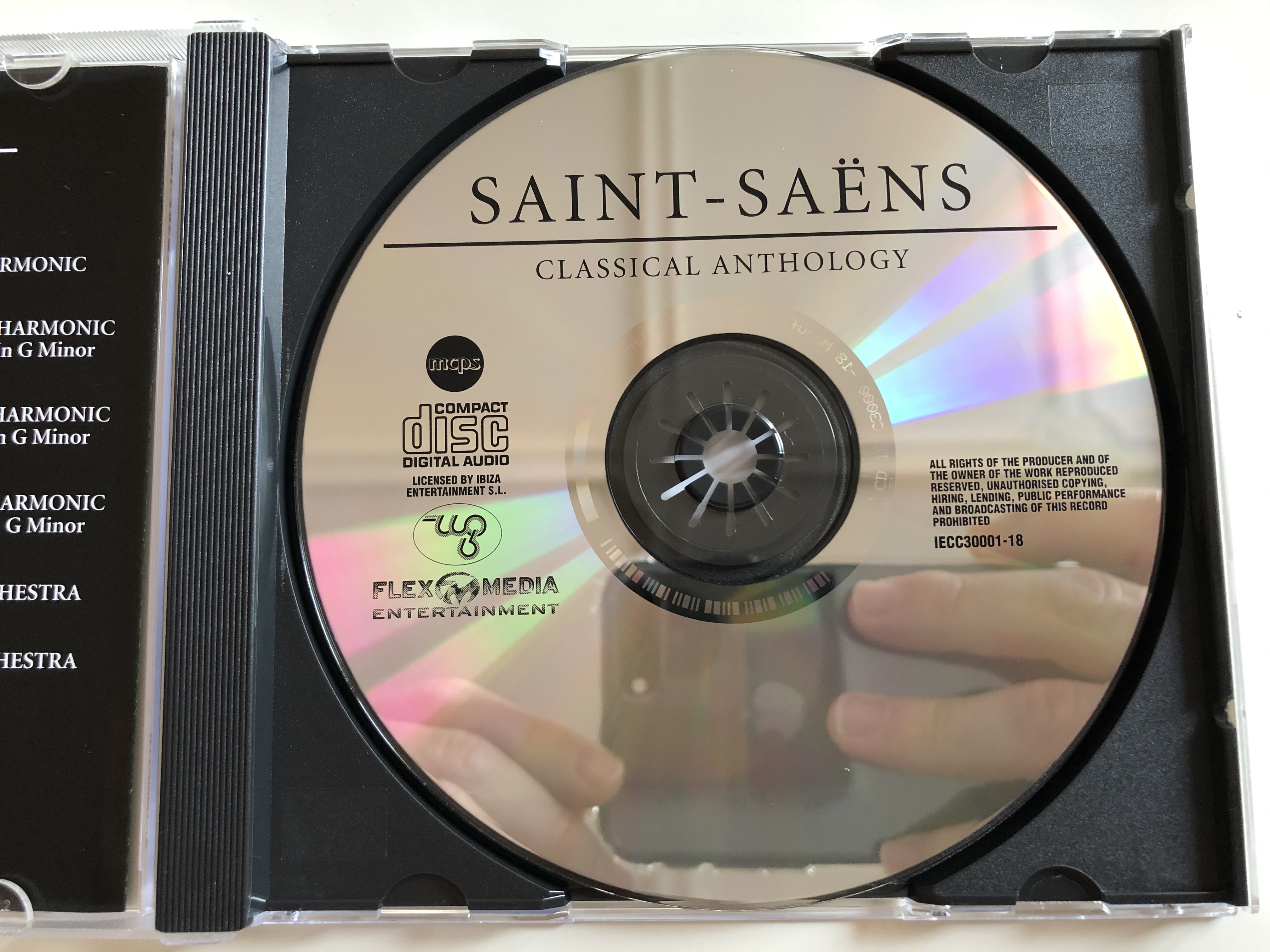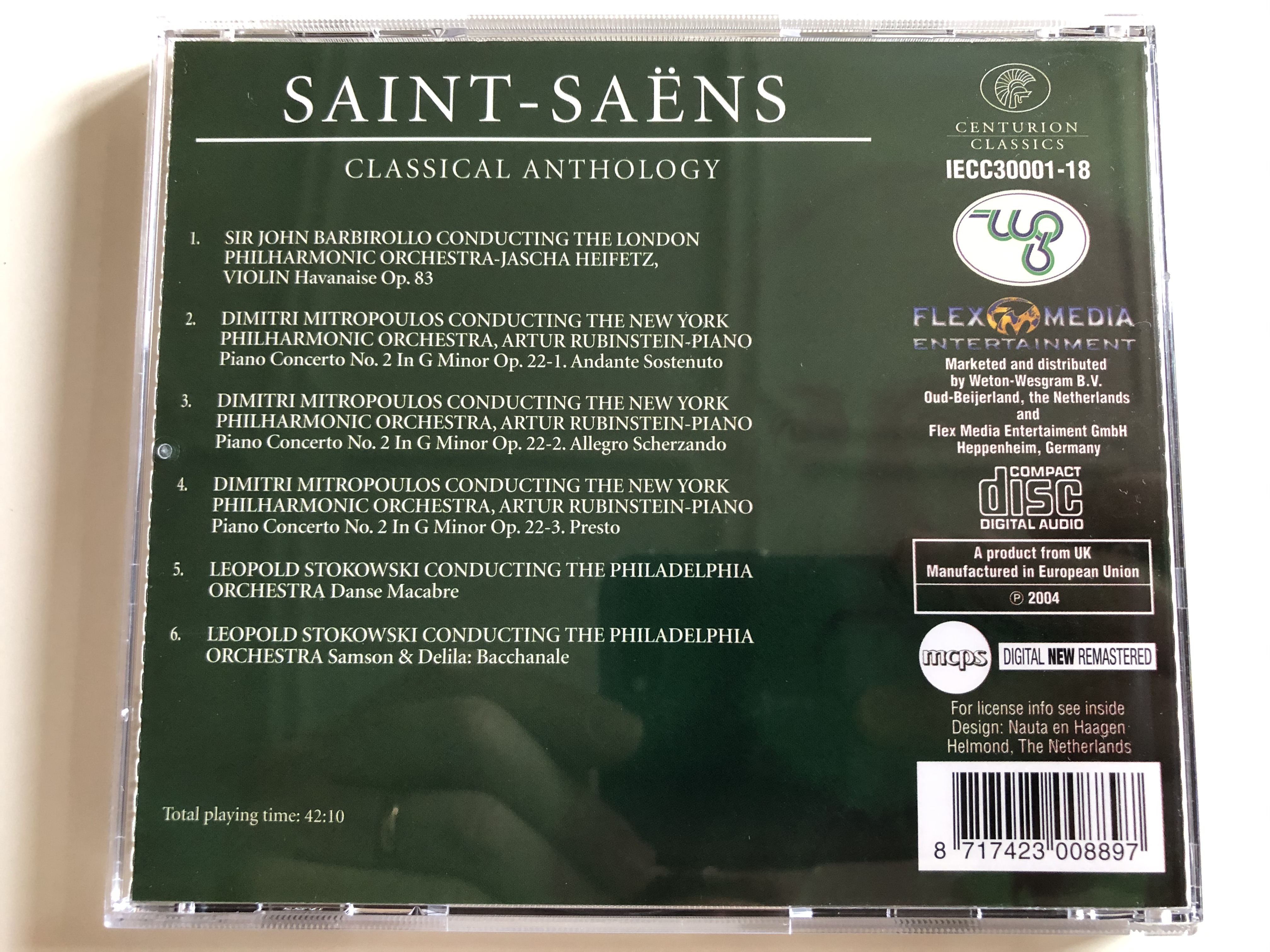Description
Saint - Saens / Havanaise Op. 83 - Piano Concerto No. 2 - Danse Macabre Samson & Delila / The London Philharmonic Orchestra, Conductor: Sir John Barbirollo / The / Classical Anthology / Centurion Classics Audio CD 2004 / IECC3000118
UPC 8717423008897
Product Details:
Tracklist:
1. SIR JOHN BARBIROLLO CONDUCTING THE LONDON PHILHARMONIC
ORCHESTRA-JASCHA HEIFETZ, VIOLIN Havanaise Op. 83
2. DIMITRI MITROPOULOS CONDUCTING THE NEW YORK PHILHARMONIC
ORCHESTRA, ARTUR RUBINSTEIN -PIANO Piano Concerto No. 2 In G Minor
Op. 22-1. Andante Sostenuto |
3. DIMITRI MITROPOULOS CONDUCTING THE NEW YORK PHILHARMONIC
ORCHESTRA, ARTUR RUBINSTEIN -PIANO Piano Concerto No. 2 In G Minor
Op. 22-2. Allegro Scherzando
4. DIMITRI MITROPOULOS CONDUCTING THE NEW YORK PHILHARMONIC
ORCHESTRA, ARTUR RUBINSTEIN-PIANO Piano Concerto No. 2 In G Minor
Op. 22-3. Presto
5. LEOPOLD STOKOWSKI CONDUCTING THE PHILADELPHIA ORCHESTRA
Danse Macabre
6. LEOPOLD STOKOWSKI CONDUCTING THE PHILADELPHIA ORCHESTRA
Samson & Delila: Bacchanal
About Havanaise:
The Havanaise in E major, Op. 83, is a composition for violin and orchestra based on the habanera rhythm, written in 1887 by French composer, Camille Saint-Saëns for Cuban violinist Rafael Diaz Albertini.[1][2] It is one of the standards of the classical concertante repertoire.
Description:
Once described as the French Mendelssohn, Camille Saint-Saëns was talented and precocious as a child, with interests by no means confined to music. He made an early impression as a pianist. Following established French tradition, he was for nearly 20 years organist at the Madeleine in Paris and taught briefly at the École Niedermeyer, where he befriended his pupil Gabriel Fauré. He was a co-founder of the important Société Nationale de Musique with the patriotic aim of promoting contemporary French music in the aftermath of the Franco-Prussian war of 1870/1, in which he had served in the Garde Nationale de la Seine. Prolific and versatile as a composer, he contributed to most genres of music, but by the time of his death in 1921 his popularity in France had diminished considerably, as fashions in music had changed.
About the Composer:
Charles-Camille Saint-Saëns (9 October 1835 – 16 December 1921) was a French composer, organist, conductor and pianist of the Romantic era. His best-known works include Introduction and Rondo Capriccioso (1863), the Second Piano Concerto (1868), the First Cello Concerto (1872), Danse macabre (1874), the opera Samson and Delilah (1877), the Third Violin Concerto (1880), the Third ("Organ") Symphony (1886) and The Carnival of the Animals (1886).
Saint-Saëns was a musical prodigy; he made his concert debut at the age of ten. After studying at the Paris Conservatoire he followed a conventional career as a church organist, first at Saint-Merri, Paris and, from 1858, La Madeleine, the official church of the French Empire. After leaving the post twenty years later, he was a successful freelance pianist and composer, in demand in Europe and the Americas.
As a young man, Saint-Saëns was enthusiastic for the most modern music of the day, particularly that of Schumann, Liszt and Wagner, although his own compositions were generally within a conventional classical tradition. He was a scholar of musical history, and remained committed to the structures worked out by earlier French composers. This brought him into conflict in his later years with composers of the impressionist and dodecaphonic schools of music; although there were neoclassical elements in his music, foreshadowing works by Stravinsky and Les Six, he was often regarded as a reactionary in the decades around the time of his death.
Saint-Saëns held only one teaching post, at the École de Musique Classique et Religieuse in Paris, and remained there for less than five years. It was nevertheless important in the development of French music: his students included Gabriel Fauré, among whose own later pupils was Maurice Ravel. Both of them were strongly influenced by Saint-Saëns, whom they revered as a genius.




























